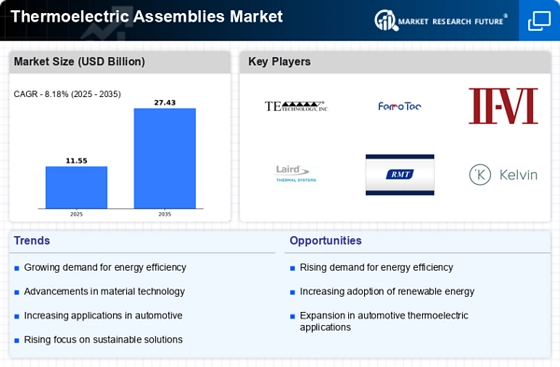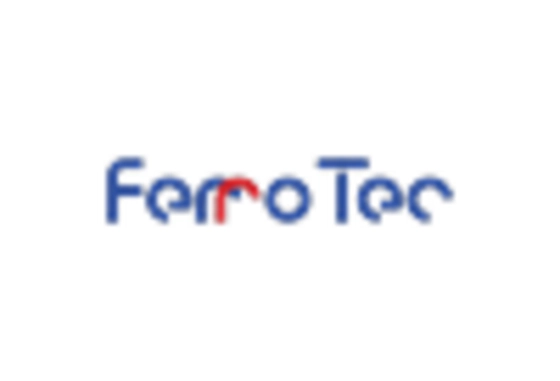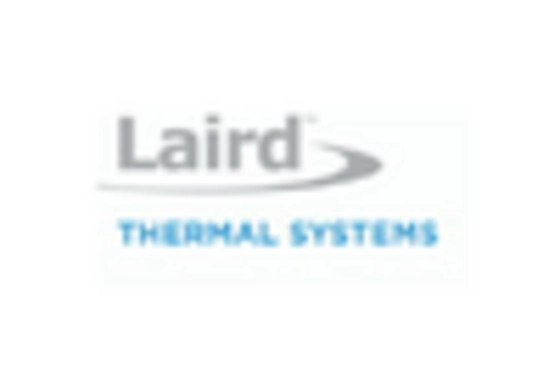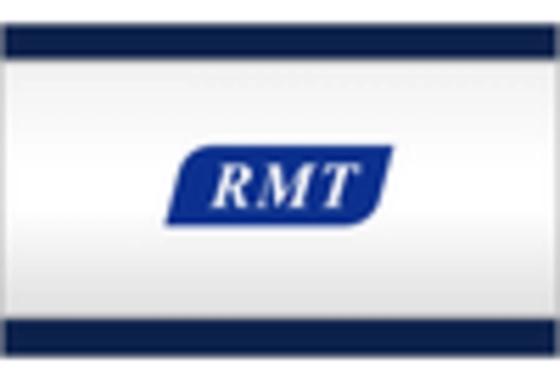Expansion of Automotive Applications
The Thermoelectric Assemblies Market is experiencing expansion in automotive applications, driven by the increasing focus on fuel efficiency and emissions reduction. Thermoelectric devices are being integrated into vehicles to convert waste heat from engines into electrical energy, thereby improving overall energy efficiency. This application not only enhances vehicle performance but also supports the growing trend towards electrification in the automotive sector. With the automotive industry projected to invest heavily in innovative technologies, the Thermoelectric Assemblies Market is likely to see a rise in demand for thermoelectric solutions. Furthermore, as electric vehicles gain traction, the need for efficient thermal management systems will further bolster the market.
Increasing Focus on Renewable Energy Sources
The Thermoelectric Assemblies Market is experiencing a notable shift towards renewable energy sources. As nations strive to reduce carbon emissions and combat climate change, the demand for efficient energy conversion technologies is rising. Thermoelectric assemblies, which convert heat directly into electricity, are increasingly being integrated into renewable energy systems, such as solar thermal and geothermal applications. This trend is supported by government incentives and policies promoting clean energy technologies. According to recent data, the market for thermoelectric devices is projected to grow at a compound annual growth rate of approximately 10% over the next five years, driven by the need for sustainable energy solutions. The Thermoelectric Assemblies Market is thus positioned to benefit from this transition towards greener energy alternatives.
Government Initiatives and Funding for Research
The Thermoelectric Assemblies Market is significantly influenced by government initiatives and funding aimed at promoting research and development in thermoelectric technologies. Various governments are recognizing the potential of thermoelectric assemblies in enhancing energy efficiency and reducing greenhouse gas emissions. As a result, funding programs and grants are being established to support innovative projects and collaborations between academia and industry. This financial backing is crucial for advancing the development of next-generation thermoelectric materials and systems. Recent reports indicate that government investments in clean energy technologies, including thermoelectric solutions, are expected to increase, thereby providing a favorable environment for the Thermoelectric Assemblies Market to thrive.
Rising Demand for Waste Heat Recovery Solutions
The Thermoelectric Assemblies Market is witnessing a surge in demand for waste heat recovery solutions across various sectors. Industries such as manufacturing, automotive, and power generation are increasingly recognizing the potential of thermoelectric assemblies to capture and convert waste heat into usable energy. This not only enhances energy efficiency but also contributes to cost savings and reduced environmental impact. Recent studies indicate that waste heat recovery could account for up to 30% of energy consumption in industrial processes. As companies seek to optimize their operations and comply with stringent environmental regulations, the Thermoelectric Assemblies Market is likely to see significant growth in applications related to waste heat recovery systems.
Technological Advancements in Thermoelectric Materials
The Thermoelectric Assemblies Market is benefiting from ongoing technological advancements in thermoelectric materials. Innovations in material science, such as the development of new alloys and nanostructured materials, are enhancing the efficiency and performance of thermoelectric devices. These advancements enable higher conversion efficiencies and broader temperature ranges, making thermoelectric assemblies more versatile for various applications. For instance, recent breakthroughs in bismuth telluride and skutterudite materials have shown promise in improving thermoelectric performance. As research continues to yield new materials with superior properties, the Thermoelectric Assemblies Market is poised for growth, attracting investments and fostering collaborations among manufacturers and research institutions.


















Leave a Comment